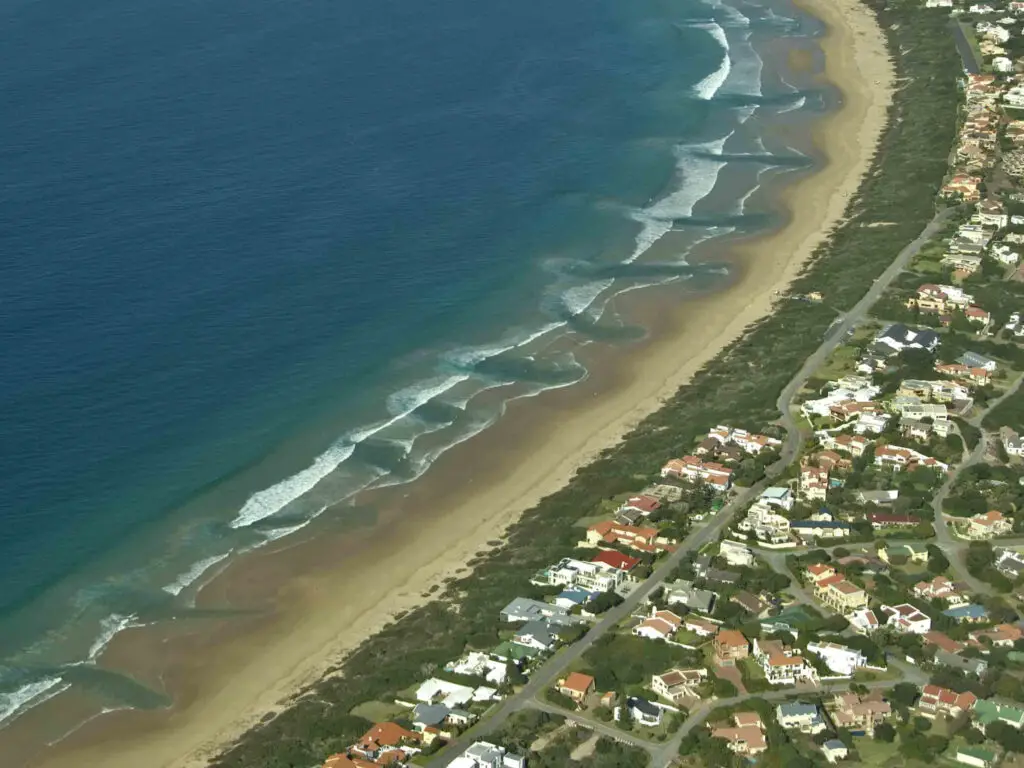

When you go to the beach and notice a spot with no waves, you might think it’s a calm and safe place to relax, but this could not be further from the truth. That spot with no waves is likely a rip current, a dangerous natural phenomenon that can appear randomly along the coast.
The Hidden Danger of a Spot with No Waves
A spot with no waves is a deceptive area in the ocean where the water surface appears unusually calm, the waves are smaller, and the color is darker due to deeper water. While it may seem inviting, stepping into this area can be life-threatening.

Rip currents are powerful channels of fast-moving water that can sweep swimmers out to sea at an alarming speed. Even experienced swimmers or Olympic athletes might struggle to swim against the current, making it one of the leading causes of drownings at sea, accounting for 80% of such incidents.
What to Do If You’re Caught in a Rip Current
If you accidentally step into a spot with no waves and are swept away by a rip current, it’s critical to stay calm. Fighting the current by swimming directly back to shore will only exhaust you. Instead:
- Stay calm: Panicking will waste your energy.
- Swim horizontally: Move parallel to the shore to escape the current’s grip.
- Signal for help: Raise your hand or shout to alert lifeguards or nearby beachgoers.
By staying calm and swimming sideways, you increase your chances of escaping the current and returning to safety.

Conclusion
The next time you’re at the beach, be vigilant. A spot with no waves might seem tranquil, but it could be hiding a dangerous rip current. Understanding this phenomenon and knowing how to respond can save your life or the life of someone else. Always prioritize safety when enjoying the ocean, and remember: appearances can be deceiving.
Please SHARE this article with your friends and family on Facebook.
Urgent: 7.7 Earthquake Rocks Region — Rescue Efforts Underway

Just as the world slumbered, the ground beneath suddenly roared to life.
Without a hint of warning, the earth convulsed and cracked, sending shockwaves through sleeping towns. Buildings shuddered violently, some giving way entirely.

Barefoot and disoriented, people poured into the streets, their faces etched with fear. What began as a subtle tremor rapidly escalated into one of the most powerful earthquakes the region has seen in years—a terrifying ordeal that had only just begun.
In the early morning hours of Monday, a massive 7.7-magnitude earthquake struck near the China–Myanmar border.
The quake’s epicenter lay a mere 10 kilometers beneath the surface, according to the U.S. Geological Survey, unleashing violent shaking felt across southern China, northern Thailand, and parts of Myanmar.
Tragically, initial reports confirm dozens of lives lost and hundreds more injured, with countless others feared trapped under collapsed structures.
The quake’s reach extended far beyond its epicenter, rattling major northern Thai cities such as Chiang Rai and Chiang Mai, where panicked residents evacuated buildings en masse.
Rescue teams are battling immense challenges—damaged infrastructure, power failures, and broken communication networks—to deliver urgent aid.
Around the clock, emergency responders strive to provide shelter, medical attention, and relief to those caught in the disaster’s wake.
In Summary
As the devastation becomes clearer, the race to save lives intensifies. This powerful quake has left a wide swath of destruction across several countries, underscoring the critical need for swift international cooperation and humanitarian assistance. The hours ahead will be crucial in determining how many can be rescued and cared for……
Để lại một phản hồi